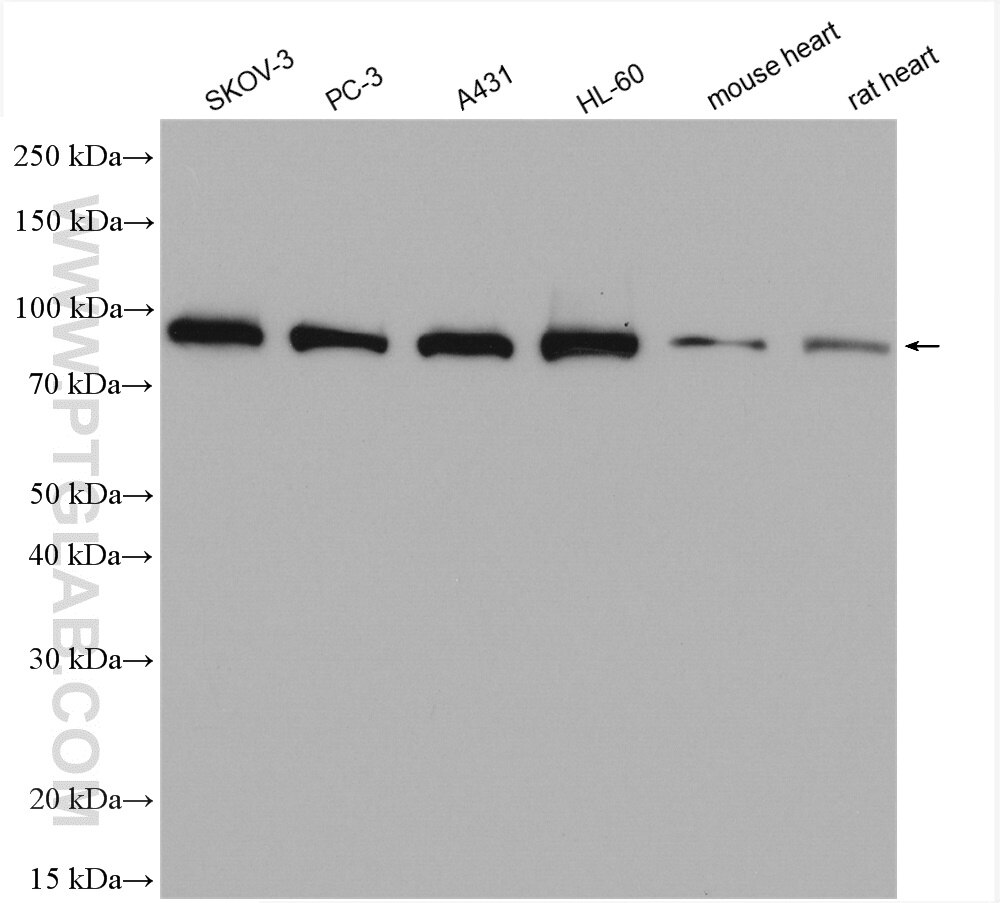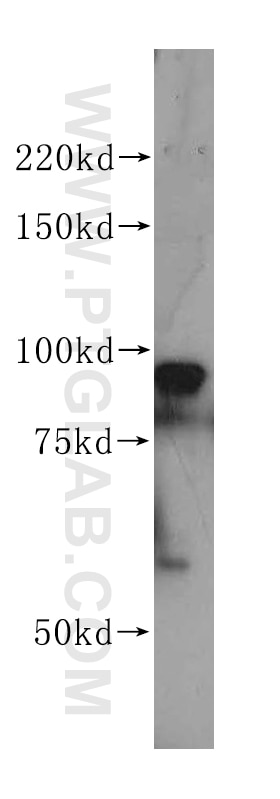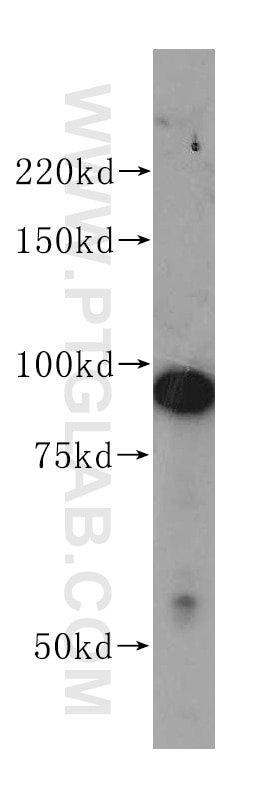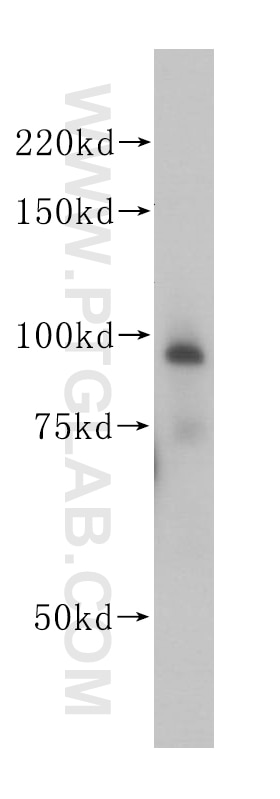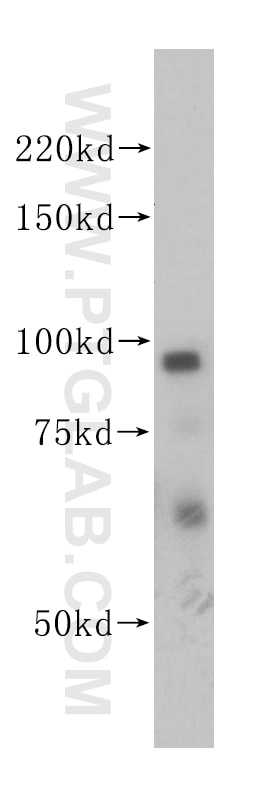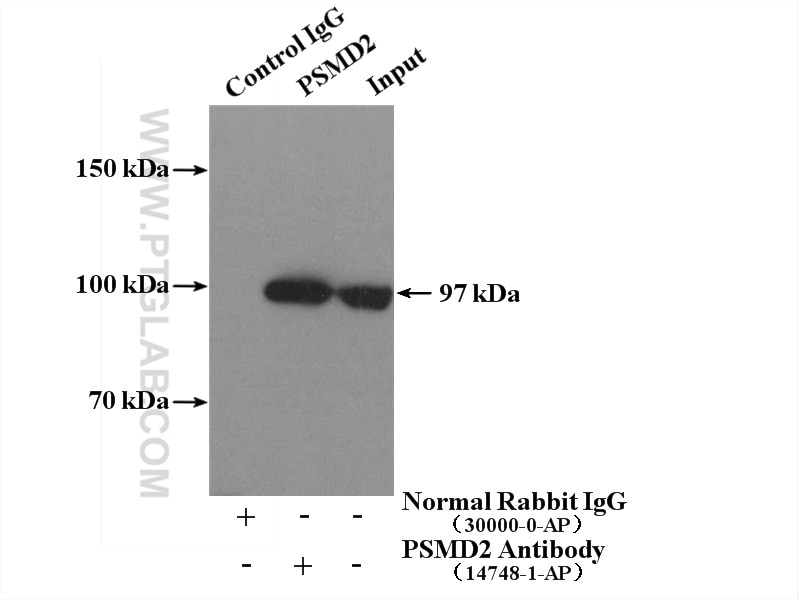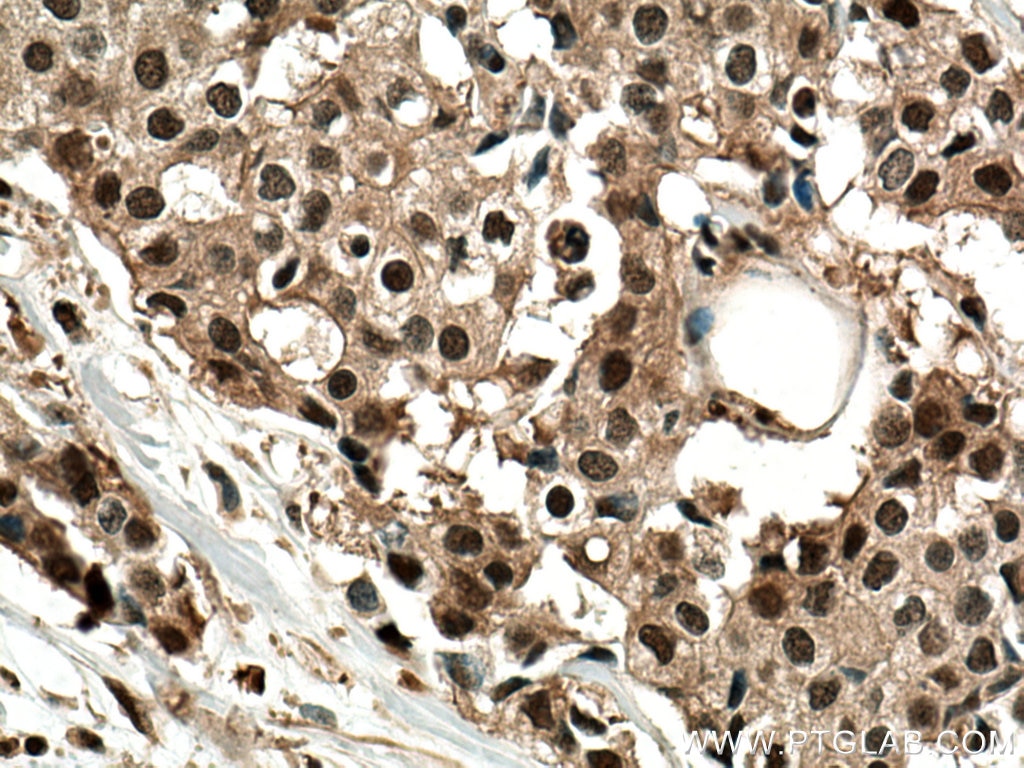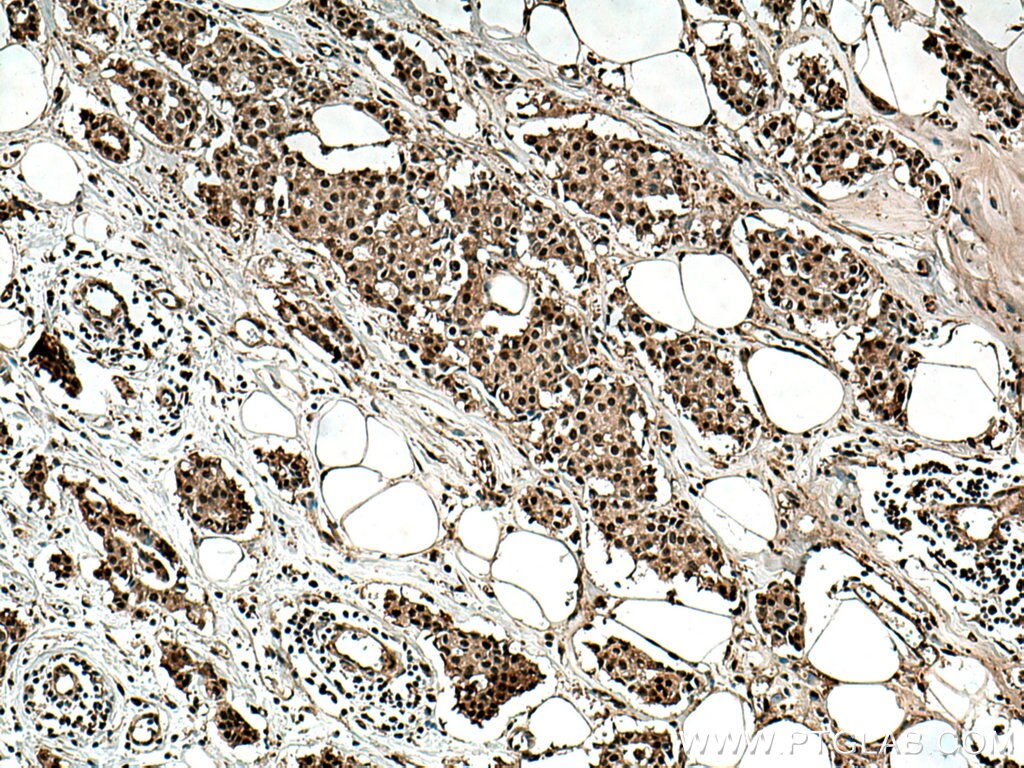- Phare
- Validé par KD/KO
Anticorps Polyclonal de lapin anti-PSMD2
PSMD2 Polyclonal Antibody for WB, IP, IHC, ELISA
Hôte / Isotype
Lapin / IgG
Réactivité testée
Humain, rat, souris
Applications
WB, IP, IF, IHC, CoIP, ELISA
Conjugaison
Non conjugué
N° de cat : 14748-1-AP
Synonymes
Galerie de données de validation
Applications testées
| Résultats positifs en WB | cellules SKOV-3, cellules A431, cellules HeLa, cellules HL-60, cellules K-562, cellules PC-3, tissu cardiaque de rat, tissu cardiaque de souris, tissu cardiaque humain, tissu de muscle squelettique de souris |
| Résultats positifs en IP | cellules K-562 |
| Résultats positifs en IHC | tissu de cancer du sein humain, il est suggéré de démasquer l'antigène avec un tampon de TE buffer pH 9.0; (*) À défaut, 'le démasquage de l'antigène peut être 'effectué avec un tampon citrate pH 6,0. |
Dilution recommandée
| Application | Dilution |
|---|---|
| Western Blot (WB) | WB : 1:1000-1:4000 |
| Immunoprécipitation (IP) | IP : 0.5-4.0 ug for 1.0-3.0 mg of total protein lysate |
| Immunohistochimie (IHC) | IHC : 1:50-1:500 |
| It is recommended that this reagent should be titrated in each testing system to obtain optimal results. | |
| Sample-dependent, check data in validation data gallery | |
Applications publiées
| KD/KO | See 2 publications below |
| WB | See 10 publications below |
| IHC | See 2 publications below |
| IF | See 2 publications below |
| IP | See 1 publications below |
| CoIP | See 3 publications below |
Informations sur le produit
14748-1-AP cible PSMD2 dans les applications de WB, IP, IF, IHC, CoIP, ELISA et montre une réactivité avec des échantillons Humain, rat, souris
| Réactivité | Humain, rat, souris |
| Réactivité citée | Humain, souris |
| Hôte / Isotype | Lapin / IgG |
| Clonalité | Polyclonal |
| Type | Anticorps |
| Immunogène | PSMD2 Protéine recombinante Ag6484 |
| Nom complet | proteasome (prosome, macropain) 26S subunit, non-ATPase, 2 |
| Masse moléculaire calculée | 100 kDa |
| Poids moléculaire observé | 100 kDa |
| Numéro d’acquisition GenBank | BC002368 |
| Symbole du gène | PSMD2 |
| Identification du gène (NCBI) | 5708 |
| Conjugaison | Non conjugué |
| Forme | Liquide |
| Méthode de purification | Purification par affinité contre l'antigène |
| Tampon de stockage | PBS avec azoture de sodium à 0,02 % et glycérol à 50 % pH 7,3 |
| Conditions de stockage | Stocker à -20°C. Stable pendant un an après l'expédition. L'aliquotage n'est pas nécessaire pour le stockage à -20oC Les 20ul contiennent 0,1% de BSA. |
Informations générales
Tumor necrosis factor type 1 receptor-associated protein 2 (TRAP2), encoded by PSMD2 gene, is a non-ATPase regulatory subunit of the 26 proteasome which is involved in the ATP-dependent degradation of ubiquitinated proteins. The 26S proteasome is a multicatalytic proteinase complex with a highly ordered structure composed of 2 complexes, a 20S core and a 19S regulator. The 19S regulator is composed of a base, which contains 6 ATPase subunits and 2 non-ATPase subunits, and a lid, which contains up to 10 non-ATPase subunits. TRAP2 may also participate in the TNF signalling pathway since it interacts with the tumor necrosis factor type 1 receptor.
Protocole
| Product Specific Protocols | |
|---|---|
| WB protocol for PSMD2 antibody 14748-1-AP | Download protocol |
| IHC protocol for PSMD2 antibody 14748-1-AP | Download protocol |
| IP protocol for PSMD2 antibody 14748-1-AP | Download protocol |
| Standard Protocols | |
|---|---|
| Click here to view our Standard Protocols |
Publications
| Species | Application | Title |
|---|---|---|
Oncogene The degradation of p53 and its major E3 ligase Mdm2 is differentially dependent on the proteasomal ubiquitin receptor S5a. | ||
Cell Commun Signal NQO1 potentiates apoptosis evasion and upregulates XIAP via inhibiting proteasome-mediated degradation SIRT6 in hepatocellular carcinoma. | ||
BMC Mol Biol PSMD1 and PSMD2 regulate HepG2 cell proliferation and apoptosis via modulating cellular lipid droplet metabolism. | ||
J Exp Clin Cancer Res AHSA1 is a promising therapeutic target for cellular proliferation and proteasome inhibitor resistance in multiple myeloma. |
